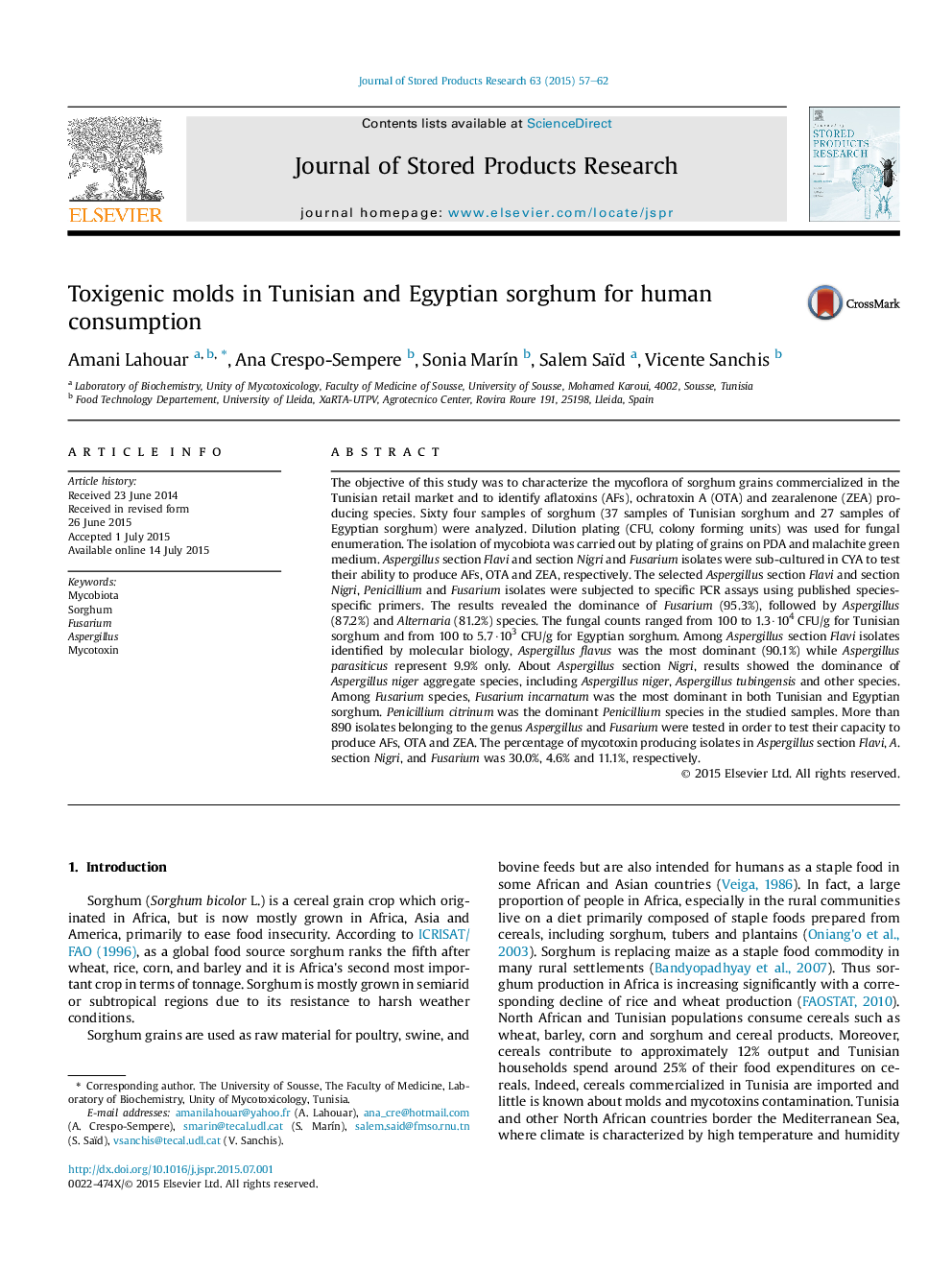| Article ID | Journal | Published Year | Pages | File Type |
|---|---|---|---|---|
| 4517032 | Journal of Stored Products Research | 2015 | 6 Pages |
•Low frequency of Aspergillus section Flavi and Nigri was observed with a relative density of 7.0% and 5.2%.•Aspergillus flavus was identified as predominant and 36.26% of isolates from section Flavi were able to produce aflatoxins.•Aspergillus niger aggregate was the most dominant among section Nigri. Only 4.61% of tested isolates were OTA positive.•One isolate of Aspergillus flocculosus (Aspergillus section Circumdati) showed the highest capacity to produce OTA (492.33 μg/kg).•11.09% Fusarium isolates were able to produce ZEA. Fusarium incarnatum was identified as predominant among Fusarium strains.
The objective of this study was to characterize the mycoflora of sorghum grains commercialized in the Tunisian retail market and to identify aflatoxins (AFs), ochratoxin A (OTA) and zearalenone (ZEA) producing species. Sixty four samples of sorghum (37 samples of Tunisian sorghum and 27 samples of Egyptian sorghum) were analyzed. Dilution plating (CFU, colony forming units) was used for fungal enumeration. The isolation of mycobiota was carried out by plating of grains on PDA and malachite green medium. Aspergillus section Flavi and section Nigri and Fusarium isolates were sub-cultured in CYA to test their ability to produce AFs, OTA and ZEA, respectively. The selected Aspergillus section Flavi and section Nigri, Penicillium and Fusarium isolates were subjected to specific PCR assays using published species-specific primers. The results revealed the dominance of Fusarium (95.3%), followed by Aspergillus (87.2%) and Alternaria (81.2%) species. The fungal counts ranged from 100 to 1.3·104 CFU/g for Tunisian sorghum and from 100 to 5.7·103 CFU/g for Egyptian sorghum. Among Aspergillus section Flavi isolates identified by molecular biology, Aspergillus flavus was the most dominant (90.1%) while Aspergillus parasiticus represent 9.9% only. About Aspergillus section Nigri, results showed the dominance of Aspergillus niger aggregate species, including Aspergillus niger, Aspergillus tubingensis and other species. Among Fusarium species, Fusarium incarnatum was the most dominant in both Tunisian and Egyptian sorghum. Penicillium citrinum was the dominant Penicillium species in the studied samples. More than 890 isolates belonging to the genus Aspergillus and Fusarium were tested in order to test their capacity to produce AFs, OTA and ZEA. The percentage of mycotoxin producing isolates in Aspergillus section Flavi, A. section Nigri, and Fusarium was 30.0%, 4.6% and 11.1%, respectively.
